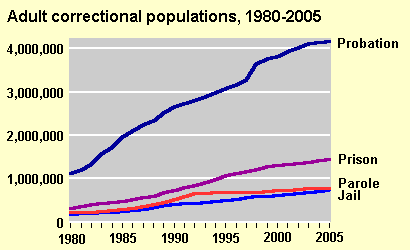
There is something important to be learned about the chart above, which shows the homicide rate per 100,000 citizens in the US in the years listed. Notice the period between 1920 and 1933. The homicide rate increased from about 6.8 per 100,000 to nearly 10 per 100,000 in this time period. Notice the trend from 1934 out, the rate decreases steadily and by 1940 is 6 per 100,000. What happened in this period of time to cause this increase in violence? The “war on alcohol” otherwise known as prohibition.
Let me start this entry by specifying that other than light alcohol consumption and the odd aspirin, I don’t have anything to do with drugs. But, I can’t help but observe that if people want to use drugs, they find a way to do so, legal or not. This human desire coupled with prohibition of substances creates demand that hardened criminals see as a profitable business opportunity, results in poor quality substances with far greater health risks, and entices otherwise lawful citizens to engage in risky activity to sate their desire for the effect of the substances.
Recently, I came across this insightful article from the Cato Institute on Prohibition of Alcohol in the 1920’s.
National prohibition of alcohol (1920-33)–the “noble experiment”–was undertaken to reduce crime and corruption, solve social problems, reduce the tax burden created by prisons and poorhouses, and improve health and hygiene in America. The results of that experiment clearly indicate that it was a miserable failure on all counts. The evidence affirms sound economic theory, which predicts that prohibition of mutually beneficial exchanges is doomed to failure
The lessons of Prohibition remain important today. They apply not only to the debate over the war on drugs but also to the mounting efforts to drastically reduce access to alcohol and tobacco and to such issues as censorship and bans on insider trading, abortion, and gambling.[1]
Although consumption of alcohol fell at the beginning of Prohibition, it subsequently increased. Alcohol became more dangerous to consume; crime increased and became “organized”; the court and prison systems were stretched to the breaking point; and corruption of public officials was rampant. No measurable gains were made in productivity or reduced absenteeism. Prohibition removed a significant source of tax revenue and greatly increased government spending. It led many drinkers to switch to opium, marijuana, patent medicines, cocaine, and other dangerous substances that they would have been unlikely to encounter in the absence of Prohibition. Those results are documented from a variety of sources, most of which, ironically, are the work of supporters of Prohibition–most economists and social scientists supported it. Their findings make the case against Prohibition that much stronger.[2]

Population of Corrections Inmates Source: US DOJ
Like the homicide chart at the top of this entry, there is something to be learned from this data. Since 1980 (when the renewed war on drugs came to the forefront in the Reagan Administration,) the population of people supervised by the Department of Justice has increased from 3.8x from 1.8M to just over 7M in 2005. When we simply look at incarceration (jail + prison) the population has increased 4.4x from 503,586 inmates to 2,193,798 inmates in 2005. The 1980 Census shows the population total of 227M and US Census estimates for 2005 population shows a net increase of 0.27x to 288M. That means the US Prison population has grown 16 times faster than the population at large during the 25 year period between 1980 and 2005.
Here’s the key question: if we were winning the war on drugs, shouldn’t the prison population stabilize at some point rather than simply escalate? In 1980, 0.0022% of our population was incarcerated. In 2005, 0.0076% of our population is incarcerated.
Why the disparity between population growth at large and prisoner growth? The “war on drugs.”
The “war on drugs” has been raging ever since 1930 when Harry J. Anslinger (aided by William Randolf Hearst’s desire to sell more newspapers) began an organized public smear campaign of the negative impact of marijuana. The facts were irrelevant in this campaign and it has been used as the blue print for subsequent attacks on illegal substances. After 77 years of failure, uncounted trillions of dollars, and who knows how many unnecessary deaths, it’s time to reexamine this failed policy of prohibition and so called “war on drugs.”
Should all illicit substances be made legal? No, I don’t believe that substances where repeatable, reputable scientific examination has shown nearly immediate mortal danger to humans from the substance should be legal. But let’s be honest, the demand for drugs that kill their users quickly is low. There are mainstream illicit substances like marijuana that are no more dangerous than alcohol, tobacco, or caffeine. These substances should be decriminalized, regulated, and taxed which would create a new revenue stream, reduce the stress on our courts and prison system, and allow funds for treatment of addiction and education.
Common sense dictates what we must do. Let’s get on with it. Tweet










[…] racism fuels this trend. The most reasonable way to derail the trend, in my opinion, is to lift modern prohibition and regulate the substances in question. In fact, prohibition actually causes more crime than it prevents. We don’t see anyone being […]